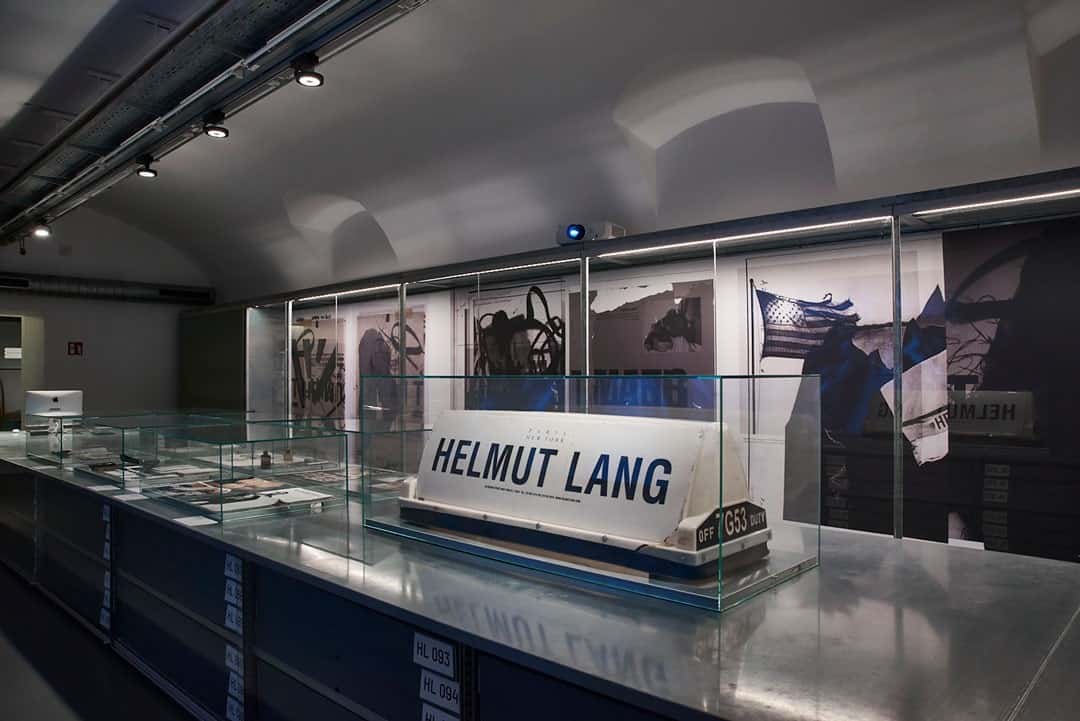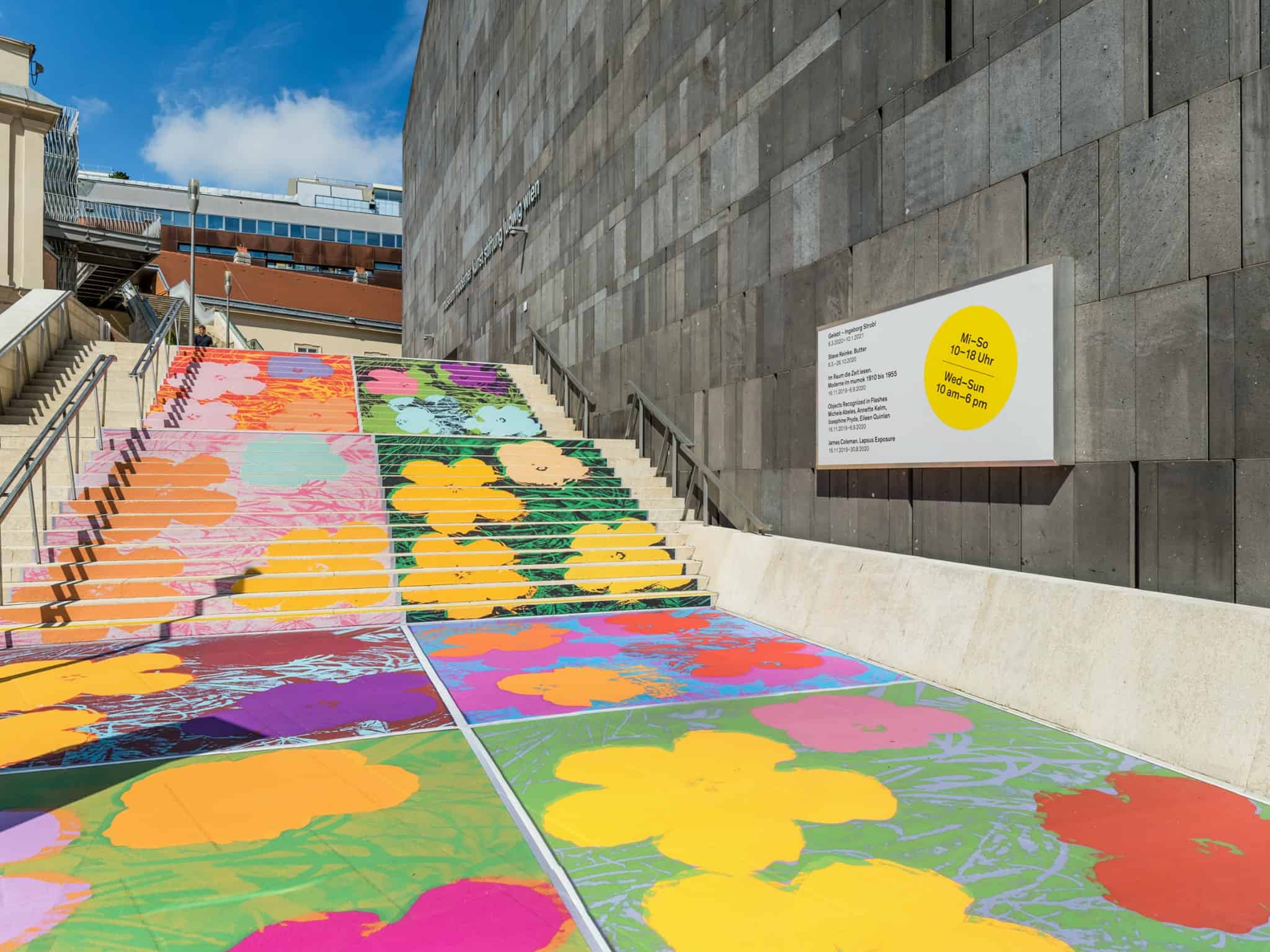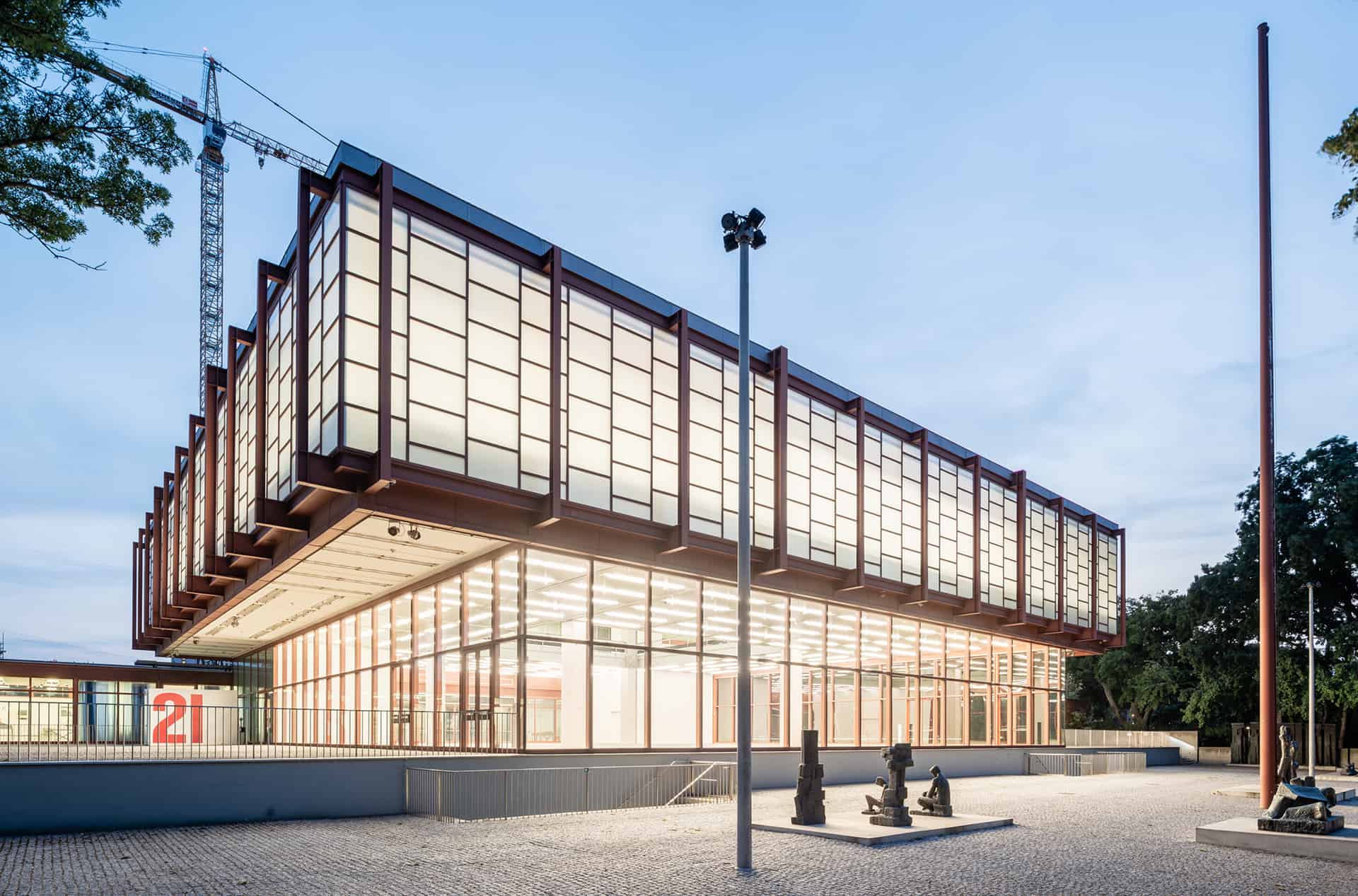This week we are heading to Vienna. One of Europe’s first fairs in six-months will open their doors. viennacontemporary is starting on 24 September. It’s a very positive sign for the art market in the Central and Eastern European artworld. The fair offers a unique insight into the vibrant contemporary art scene of Central and Eastern Europe. As usual, Contemporary Lynx team will be there to report live from the event. Visit our solo stand in Media Zone or follow us on Instagram. We have also created a useful list of what to see during the Art Week in Vienna.
1. Viennacontemporary
Marx Halle
Karl-Farkas-Gasse 19,
1030 Vienna
Austria’s largest art fair viennacontemporary takes place from 24-27 September. This is a very good sign for the Central and Eastern European art market as this is the most renowned contemporary art fair in Central Europe. This year you can see works shown by 65 participating galleries from 16 countries.
viennacontemporary presents a rich program with the curated sections:
- ZONE1, curated by Cathrin Meyer
- Explorations, curated by Elisa R. Linn & Lennart Wolff
- Video, curated by Jen Kratochvil
2. Curated by
Page: www.curatedby.at
Curated by is a gallery festival with international curators in Vienna that take place from 8th September until 26 September 2020. It presents solo and group exhibitions by international and national curators. This year’s theme HYBRIDS examines the dissolution of boundaries between artistic practice and its spheres of activity. London-based writer and art historian Orit Gat has explored the theme for the festival in an essay which you can read here (https://curatedby.at/items/uploads/items/Hybrids.pdf).
Participating Curators & Galleries:
- Charim Galeriel / curated by Brigitte Huck
- CRONE Wien / curated by Jakob Lena Knebl
- Croy Nielsen / curated by Christina Lehnert
- E X I L E / curated by Julius Pristauz
- FELIX GAUDLITZ / curated by Richard Birkett & Taylor Le Melle
- Gianni Manhattan / curated by James Lewis
- Galerie Martin Janda / curated by Noit Banai
- Galerie Kandlhofer / curated by Bonaventure Soh Bejeng Ndikung
- Georg Kargl Fine Arts / curated by Alistair Hicks
- Christine Koenig Galerie / curated by Marina Fokidis
- KRINZINGER PROJEKTE / curated by Erno Vroonen
- Galerie Emanuel Layr / curated by Lili Reynaud-Dewar und Olga Rozenblum
- Projektraum Viktor Bucher / curated by Gérard A. Goodrow
- Mario Mauroner Contemporary Art Vienna / curated by Scrum: Séamus Kealy & Tilo Schulz
- Galerie Meyer Kainer / curated by tba
- shore / curated by Chris Viaggio
- Galerie nächst St. Stephan Rosemarie Schwarzwälder / curated by Hans Ulrich Obrist / Friederike Mayröcker
- Galerie Raum mit Licht / curated by Heidrun Rosenberg
- GABRIELE SENN GALERIE / curated by Adrian Buschmann
- Silvia Steinek Galerie / curated by Susanne Rohringer
- Sophie Tappeiner / curated by Jeppe Ugelvig
- VIN VIN / curated by Emily Watlington
- Galerie Hubert Winter / curated by Chiara Vecchiarelli
- Zeller van Almsick / curated by Kerstin von Gabain
3. viennacontemporary Galleries Breakfast
Page: www.viennacontemporary.at/en/galleries-breakfast
Within the scope of curated by_2020, the participating galleries open their doors in the morning exclusively to the viennacontemporary audience. Special exhibitions conceived by international curators will be accompanied by breakfast receptions on Friday, 26 September from 9:30 am–12:00 pm.
4. Belvedere 21
Arsenalstraße 1
1030 ViennaPage: www.belvedere.at/en
Belvedere 21 presents an exhibition by Herbert Brandl who ranks alongside the most successful contemporary painters in Austria. Landscape as a subject has always been dominant in his work, which alternates between painterly abstraction and objectivity. Since the turn of the new millennium, Brandl’s passion for the monumentality of mountainscapes has become increasingly apparent. Using various formats and techniques, the painter has reinterpreted the subject of mountains, playing with expressive gestures, abstract color spaces, and massive shapes. From late January 2020 the Belvedere 21 will be presenting an exhibition of Brandl’s oeuvre that focuses on work produced over the past two decades, including pieces that the artist has created especially for this exhibition.
If you prefer to stay outside than visit their sculpture garden. The Belvedere 21 sculpture garden showcases works by internationally renowned artists. The sculpture garden is accessible free of charge during museum opening hours via the new access from the Schweizergarten.
5. Kunsthalle Wien
Museumsquartier
Museumsplatz 1
1070 ViennaPage: kunsthallewien.at/en
During viennacontemporary, the Kunsthalle Wien will present two exhibitions.
KISS presents a series of artistic contributions and works, commissioned by Kunsthalle Wien, which will be on view in public space in the summer and early fall of 2020. The artists Eva Egermann, Thomas Geiger, Elke Silvia Krystufek, Rade Petrasevic, Margot Pilz, Johanna Tinzl are invited to engage in an act of social and cultural intimacy in the city and to realize projects that reduce the distance between contemporary art practices and their audiences.
The exhibition titled … of bread, wine, cars, security and peace examines the notion of the “good life.” Through its questioning of the “good life,” the exhibition, which takes place at both venues of Kunsthalle Wien – Museumsquartier and Karlsplatz – suggests alternatives both to the fear of imminent economic and social collapse and to the return to an unsustainable “normality,” which, at present, appear to be the only two choices before us. Critical, constructive, and imaginative artists’ voices act as signals of the possibilities for social change and of new proposals for living together. … of bread, wine, cars, security and peace puts care, solidarity, and a sense of possibility at its center – values that have become significantly more precious to everyone since the exhibition’s premature closure.
6. KUNST HAUS WIEN
Untere Weißgerberstraße 13
1030 ViennaPage: www.kunsthauswien.com/en
As a Green Museum, KUNST HAUS WIEN regularly dedicates major photographic presentations to key ecological themes, you can see the exhibition titled “Nach uns die Sintflut” [After Us, the Flood]. The works in the exhibition show and analyse the impact the global climate crisis has on glaciers, sea and marine regions, considering both scientific and political aspects. The images of disappearing glaciers, rising sea levels, increasingly acidified oceans and desertificated land areas are not least emotionally touching, and once again bear witness to the urgency of the topic.
“Nach uns die Sintflut” [After Us, the Flood] brings together current photographic and cinematic work by 21 international and domestic artists. Their works, often the result of extensive research and close collaborations with leading scientists, throw into relief the ecological effects our way of life has on different regions of the earth. Some also highlight its socio-political and social consequences, or outline future scenarios. The artists draw attention to people in those regions already most affected by the consequences of climate change, and illustrate the global connections between our lifestyle and the ecological, social and economic problems we face.
7. LEOPOLD MUSEUM
Museumsplatz 1
1070 ViennaPage: www.leopoldmuseum.org/en
Friedensreich Hundertwasser (1928–2000) shaped 20th-century art beyond the borders of Austria as a painter, designer of living spaces and pioneer of the environmental movement. His life-long, intense exploration of the personality and oeuvre of Egon Schiele (1890–1918) is largely unknown.
At the age of 20, when he was a student at the Vienna Academy of Fine Arts, the artist discovered Viennese Modernism through exhibitions and books: Schiele, especially, would later become a central point of reference for the internationally active artist. Hundertwasser honed his draftsmanship by studying Schiele’s drawings, successfully propagated Schiele’s art amongst his fellow artists in Paris, and in 1965 gave one of his works the title 622 Mourning Egon Schiele. Until his death, Hundertwasser surrounded himself in his studios and homes in Venice and New Zealand with reproductions of paintings and drawings by his highly esteemed fellow artist. Hundertwasser’s poetic text “I Love Schiele”, written in 1951, illustrates the extent to which he related to the artist: “I often dream like Schiele, my father, about flowers that are red, and birds and flying fish and gardens in velvet and emerald green and human beings who walk, weeping, in red-yellow and ocean-blue.”
Today, 20 years after Hundertwasser’s death, the Leopold Museum is dedicating an exhibition “HUNDERTWASSER – SCHIELE”, conceived as a dialogue, to these two iconic artists, which comprises some 170 exhibits. Shining the spotlight on central motifs and themes in the works of both artists, such as ensouled nature and the relationship between the individual and society, the exhibition illustrates analogies in their oeuvres that go beyond formal similarities. Through eminent loans from Austrian and international collections and archival material published for the first time, the exhibition retraces the artistic and spiritual kinship of two extraordinary 20th-century Austrian artists, who never had the chance to meet.

HELMUT LANG ARCHIVE. AN INTERVENTION BY HELMUT LANG. © MAK/Gregor Mayer
8. MAK – Österreichisches Museum für angewandte Kunst / Gegenwartskunst
Stubenring 5
1010 ViennaPage: www.mak.at/en
We would like to recommend you two shows: OTTO PRUTSCHER and Helmut Lang Archive.
Otto Prutscher (1880–1949) was an architect and designer, an exhibition designer, teacher, and member of all the important arts and crafts movements—from the Secession to the Werkbund.
Prutscher was one of the first students of the Vienna School of Arts and Crafts. Being taught by Josef Hoffmann and the painter Franz Matsch clearly left its mark on Prutscher’s designs: this is evident in both their high-quality draftsmanship and their constant alignment with prevailing architectural trends. Prutscher’s known oeuvre comprises over 50 buildings, almost 50 exhibitions, some 170 interiors, 300 interior designs, and more than 200 pieces and sets of furniture. 70 years after Prutscher’s death, this exhibition explores his complex creative work and his role in the development of Viennese Modernism. The show was inspired by the collector Hermi Schedlmayer’s generous gift of 139 designs, objects, and furniture by Prutscher.
Until 1 November 2020, the MAK is showing a temporary intervention by Helmut Lang in the HELMUT LANG ARCHIVE, questioning the archive as a simultaneous collection, storage, and exhibition place, as a store of memories, and the potential of its use. The MAK is the only institution worldwide where the history of Helmut Lang’s brand development and identity can be traced. Since retiring from the fashion industry in 2005, the 1956-born Austrian has concentrated on his artistic work, and 20 international museums have received his donations.

Blumenteppich vor dem mumok aus Andy Warhols Flowers-Motiven © The Andy Warhol Foundation for the Visual Arts, New York/Licensed by Bildrecht, Wien 2020, Photo: Klaus Pichler © mumok
9. mumok – Museum moderner Kunst Stiftung Ludwig Wien
Museumsplatz 1
A-1070 ViennaPage: www.mumok.at/en
MISFITTING TOGETHER. Serial Formations of Pop Art, Minimal Art, and Conceptual Art
Pluralistic diversity has been governing the methodical understanding of Pop Art, Minimal Art and Conceptual Art since the 1960s. Referencing Mel Bochner’s article “The Serial Attitude” (1967) and the show Serial Formations (1967), curated by Paul Maenz and Peter Roehr, the collection exhibition MISFITTING TOGETHER explores the serial order as the connective tissue between these three movements. The presentation demonstrates how strongly they have influenced each other and how hard it is to pigeonhole them art-historically.
In their “mutual nonconformity,” the works in MISFITTING TOGETHER represent the basis for this fall’s Warhol exhibitions, ANDY WARHOL EXHIBITS a glittering alternative and DEFROSTING THE ICEBOX. Guesting at mumok: The Hidden Collections of the Antiques Collection of Kunsthistorisches Museum Wien and Weltmuseum Wien.
Artists: Lutz Bacher, Alighiero Boetti, Daniel Buren, Hanne Darboven, Jan Dibbets, Heinz Gappmayr, Robert Indiana, Jasper Johns, Donald Judd, On Kawara, Joseph Kosuth, Sol LeWitt, Roy Lichtenstein, Dóra Maurer, Claes Oldenburg, Friederike Pezold, Larry Poons, Charlotte Posenenske, Peter Roehr, Robert Smithson, Daniel Spoerri, Andy Warhol
Having Lived – Ingeborg Strobl
Ingeborg Strobl’s oeuvre is moored in the tradition of conceptual and intermedia art. Natural and animal subjects acting as mirror images of society take up a central role in her objects, installations, collages, paintings, photographs, films, and publications. Strobl donated her archive with numerous works and printed matter to mumok. This archival material is the centerpiece of the retrospective, which was conceived in collaboration with the artist—before her death in April 2017—and gives a representative overview of her comprehensive oeuvre.
Steve Reinke. Butter
“My work wants me dead, I know. It is all it ever talks about,” writes Steve Reinke in a correspondence on the occasion of his exhibition at mumok. Death and life, empathy and cruelty, sex and intimacy—but also the uneasy relationship between the author and his work—are the kind of topics that Reinke engages with in his work. In the best Nietzschean manner, however, he considers human beings not political or moral entities but puppets of microbiotic agendas: instead of the Freudian ego and id, it is bacteria, placentae, and plankton that rule the world in his more recent videos, and “culture” designates not humanistic achievement but life in a petri dish. Butter, Reinke’s first ever solo museum show, presents his new video, An Arrow Pointing to a Hole, as well as a selection of his sinister text images and absentminded needlepoints, all of which, in a paradoxically precise manner, tell stories of loss of control, formlessness, and self-abandon.
10. Secession
Friedrichstraße 12
1010 ViennaPage: www.secession.at/en
Edi Hila. The Sound of the Tuba
Edi Hila’s career as an artist is inextricably bound up with the specific political history of Albania. In the early 1970s, the young artist was barred from exercising his profession, and almost twenty years went by before he was officially permitted to take up art again and exhibit his work. His “second career” began after the collapse of the People’s Socialist Republic of Albania (1944–1990). The works Hila created after the regime change attest to the need to reinvent himself as an artist in utterly changed circumstances, but they also document the upheavals that transformed an entire country and its people.
In the exhibition The Sound of the Tuba, Hila presents around twenty paintings from different series he has worked on in recent years as well as a small selection from his output of the late 1990s. The presentation traces a historical arc, connecting today’s global migrant and refugee flows to the major wave of emigration after the fall of the Albanian regime and politically motivated deportations in the early years of Albanian communism. Juxtaposing historic and contemporary realities, Hila’s pictures render the singular features of each as well as surprisingly rich parallels between them, inviting the viewer to reflect on the present situation.
Emily Wardill. Night for Day
Emily Wardill’s films, photographs, and objects probe the complexity of perception and communication, the question of how reality appears authentic to us, and the displacements of substance and form effected by the individual nature of the imagination.
In her exhibition at the Secession, Emily Wardill debuts her most recent film project, Night for Day (2020), an installation of film and sculptures that weave into one another, and the film I gave my love a cherry that had no stone (2016).
Suellen Rocca
With Suellen Rocca’s installation in the Grafisches Kabinett, the Secession is pleased and grateful to present the last exhibition the artist conceived herself, which has been realized posthumously with great respect for her work. New paintings and drawings are presented together with paintings from recent years in a setting composed of a folding screen and a simple bed that cites Rocca’s pictorial vocabulary. Presenting the actual objects next to their figurative representations blurs the lines between exhibition and pictorial space and supports the sensation of virtually being able to step into the pictures’ landscapes.









